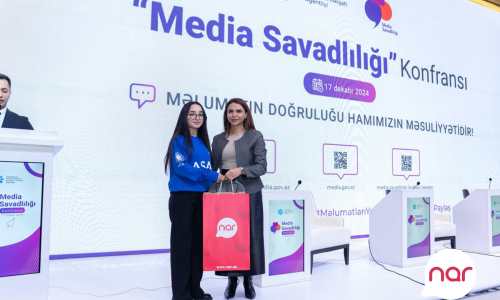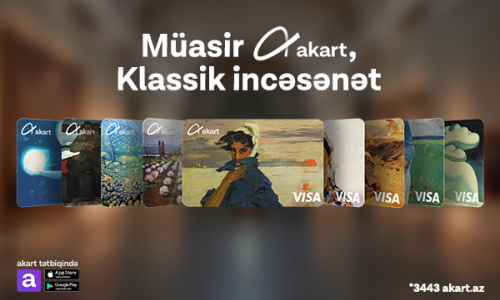Follow us !
A look at some of history's most famous greetings - PHOTO
Society
13:24 | 11.12.2013

A look at some of history's most famous greetings - PHOTO
In one small act of common courtesy, the world witnessed an historic moment of reconciliation today.U.S. President Barack Obama grasped the hand of Cuban leader Raul Castro and the pair shook hands at Nelson Mandela's memorial service in South Africa.It was an act that has seemed unthinkable for more than half a century - until today, when the two Cold War enemies paid tribute to Mr Mandela, one of the world's greatest peacemakers.That simple image (pictured below) will raise hopes around the world that the two nations could be on the verge of a breakthrough in relations.The last time it happened was in 1959, when then U.S. President Richard Nixon embraced Raul's brother Fidel (also pictured below).But as these pictures show, not all of history's famous handshakes have led to peace. Here are a selection of some those special moments that changed history.On September 22, 1938, British Prime Minister Neville Chamberlain shook hands with Nazi leader Adolf Hitler in Godesberg, Germany, in an attempt to prevent war following Hitler's takeover of Czechoslovakia's Sudetenland. The infamous handshake followed the signing of the Munich Agreement in which Chamberlain, with the French, allowed Germany annex the Czech province. The Tory Prime Minister believed Hitler was a man of his word and only concerned with the Sudetenland. He thought war could be averted.Eight days later Chamberlain returned to Britain in triumph claiming he had made peace with the dictator.It could not. Hitler continued his aggression, invaded the rest of Czechoslovakia, and the following year Britain went to war after Germany went into Poland. The Second World War started.The Soviet Union's Communist Party General Secretary Joseph Stalin, British Prime Minister Winston Churchill, and U.S. President Harry Truman met at the Potsdam Conference in Potsdam, Germany from July 16 to August 2, 1945.The purpose of the meeting, and the public show of alliance by handshake as seen above, was to decide how to proceed in the wake of Nazi Germany's collapse. The Nazis had agreed to unconditional surrender on May 8 (V-E Day).At the time, the Soviet Union controlled most of Central and Eastern Europe. Truman was a relative newcomer as President of the United States as President Roosevelt had died just months before in April.Truman was also seen as more strongly anti-Communist than his predecessor. The three leaders' handshake in Germany was a display to the world that, for the time being, all three countries were united in restructuring a post-Nazi Europe.In 1972, President Richard Nixon made a handshake that stunned the world.In February of that year he travelled to China with his wife in a landmark visit to the People's Republic of China. The trip would begin a new period of Chinese-American relations.Nixon's visit was a strategic maneuver made after relations between the West and the Communist East were gradually changing. China had publicly disagreed and split from the Soviet Union.The picture of Richard Nixon, a virulent anti-Communist since his time as a Congressman during the Alger Hiss case, shaking hands with the leader of Communist China was one most never imagined they would see.The handshake was of particular importance to Nixon as he was told that John Foster Dulles's decision not to shake hands with Zhou Enlai had left him insulted. Nixon wanted the visit to be a picturesque message sent around the world, preferring cameramen to reporters covering the event.This handshake, between President Reagan and Soviet leader Mikhail Gorbachev, signified the first meeting between US and USSR heads of state in six years.Scheduled to meet for 15 minutes at the Geneva Summit, Reagan and Gorbachev ended up speaking for substantially longer, and later braved the language barrier without translators in a truly private second conversation.Though the summit ended in the signing of an agreement stipulating that each side would reduce their nuclear arsenals by fifty percent, the two parties continued to disagree on the United States' Strategic Defense Initiative, 'Star Wars.'The handshake pictured here may seem warm, but the series of events triggered by this meeting of President Kennedy and then-Soviet leader Nikita Khrushchev had almost sparked war between them.Kennedy and then-Soviet leader Nikita Khrushchev met at the Vienna Summit in June 1961.At the time, tension was mounting over the divide in Berlin between communist-controlled East Germany and capitalist-democratic West Germany, and Khrushchev's threats at the Summit to sign a separate peace treaty with East Germany added fuel to the fire.Later that summer, Kennedy would go on to say that the United States needed to be prepared to defend its rights in West Berlin, and only weeks later, at Khrushchev's command, the building of the Berlin Wall commenced.In the year that followed, relations between the U.S. and the USSR became more strained, as both sides tested nuclear weapons, culminating in the Cuban Missile Crisis of October 1962.In a meeting that came back to haunt Tony Blair years later, he was pictured shaking the hand of Libyan dictation Colonel Gaddafi.It happened in the Gaddafi stronghold of Sirte when the then Prime Minister Blair was on a five-day visit to the country in May, 2007. Mr Blair was in Africa to meet with African leaders as he prepared to stand down as Britain's leader just over a month later.When Zimbabwean President Robert Mugabe shook hands with Movement for Democratic Change leader Morgan Tsvangirai in Harare it started the ball rolling towards democracy.Two enemies finally embraced after the signing of a deal between Zimbabwe's opposition and ruling party, which led to Tsvangirai taking office as Prime Minister and a long-awaited loosening of Mugabe's grip on power.In another symbolic act many had thought would never be possible, Britain's Queen Elizabeth II shook hands with Deputy First Minister of Northern Ireland Martin McGuinness in a brief meet in Belfast last year.McGuinness has previously admitted to having been a member of the IRA, but hailed the moment as an act of reconciliation between Britain and the Rebublican movement in Northern Ireland.This was the handshake that marked the victory in Europe during the Second World War.On April 27, 1945, Allied and Soviet forces met on a broken bridge over the River Elbe at Torgau, in Germany, and embraced.There were to be another 11 days until the official Victory In Europe Day was proclaimed, but this was the moment that told the continent that war was finally over.In the depths of the Cold War, somewhere over West Germany two rival world super powers came together in space for one brief meeting.This was the moment the shocked the world in 1975. After completing docking manoeuvres, the Russian spacecraft Soyuz and the U.S. spacecraft Apollo joined as one.Commander of the Soviet crew, Alexei Leonov and commander of the American crew, Thomas Stafford, shook hands on July 17.Following years of violence, PLO leader Yasser Arafat and Israeli Prime Minister Yitzahk Rabin finally shook hands for the first time in a moment that showed the world the peace process was finally moving.The PLO had signed a historic agreement on Palestinian autonomy in the occupied territories in September 1993. Two years later, Rabin was assassinated reportedly by a Jewish extremist after attending a peace rally in Tel Aviv.(dailymail.co.uk)ANN.Az










